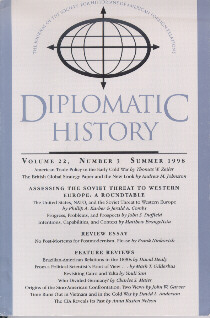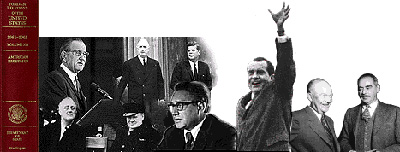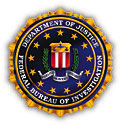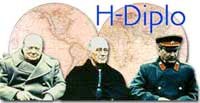|
How One Historian Stopped Worrying and Learned to Love the Internet. Robert Griffith
I can only touch on the Web sites (and services) offered by national libraries and archives around the world. Ready, Net, Go! Archival Internet Resources, a Tulane University Web site serving professional archivists, contains an extensive "meta index," or index of archival indexes such as the European Archival Network or UNESCO's Archives in the World. Examples of national archive Web pages include the Bundesarchiv Online (Germany), the �sterreichische Staatsarchiv (Austria), the Archives Nationales of France and Great Britain's venerable Public Record Office. Cold War historians will find information of interest at the NATO archives (see below), and at the Historical Archives of the European Communities in Florence, which holds archival collections dating from the founding of the European Coal and Steel Community (ECSC) in 1951, through the creation of The European Union (EU) by the Maastricht Treaty. ArcheoBiblioBase: Archives in Russia is an overview (online) of Russian Archives, drawn from the ArcheoBiblioBase information system on archival repositories in the Russian Federation, maintained by Patricia Kennedy Grimsted in collaboration with Rosarkhiv, the Federal Archival Service of Russia. For the more detailed print edition, see Grimsted, Archives of Russia: A Directory and Bibliographic Guide to Holdings in Moscow and St. Petersburg (Armonk, NY, and London: M.E. Sharpe Publishers, 2000). For background on Soviet archives, see especially Grimsted's report, "Archives in Russia Seven Years After," Research Report 20, on the Cold War International History Project Web site. The Web site of the Open Society Archives, a Soros Foundation project, contains extensive guides to the Archive's holdings on Eastern Europe and the Soviet Union, including (among many other things) the research files of Radio Free Europe and Radio Liberty. For an introduction to Chinese archival sources, see the Chinese History Research Site at the University of California, San Diego. Scholarship On-Line The work of historians and their students is also being transformed by the widespread online availability of scholarly journals. Indeed, H-Diplo, the H-NET discussion list dedicated to the study of diplomatic and international history, lists over fifty journals accessible in whole or part through the Web. Back issues of many journals, including the Journal of American History and the American Historical Review, are available through JSTOR, the large database of scholarly journals to which many libraries now subscribe.
Primary Sources On-line In addition to online databases and other bibliographic guides, libraries, government agencies and other public and private organizations are placing more and more of the historical record online. For example, the University of Michigan's outstanding government documents collection University of Michigan Documents Center includes many valuable resources. Cold War scholars will be especially interested in its extensive collection of documents, indexes and links on U.S. Foreign Policy. The Yale University Law School has created a rich documentary archive on U.S. foreign relations, the Avalon Project on the Foreign Relations of the United States. Both the National Archives and Records Administration (NARA) and the Library of Congress offer online materials on the Cold War. For an overview of documents, together with finding aids and other resources available through the National Archives, for example, see The Cold War Era: Records and Research at the National Archives and Records Administration. Many of the presidential libraries, in addition to extensive guides to their own collections, have digitized interesting (if often uneven) materials on the Cold War. Thus, the John F. Kennedy Library maintains a reference site with documents, photos and sound files, including the full text of the 272 National Security Action Memoranda issued by Kennedy from 1961 to 1963; while the Lyndon Baines Johnson Library hosts the Vietnam War Internet Project, a large set of documents, links, bibliographies and other materials relating to the Vietnam War. The Truman Library's online collection includes a detailed set of original documents and other materials on the Berlin Airlift. The recently established Harvard Project on Cold War Studies maintains an online documentary archive and a well annotated page of links to other cold war sites.
Freedom of Information Act Web sites As a result of the 1996 amendments to the Freedom of Information Act, individual agencies such as the FBI, CIA and the State Department have now established "electronic reading rooms" at which frequently requested declassified documents and other materials are posted. Thus, the Department of State FOIA Electronic Reading Room offers access to a wide variety of declassified State Department documents; while it is possible
The Declassified Cold War: The Cold
War International History
The National Security Archive has a mission similar to that of the Cold War International History Project, with which it often collaborates on conferences and other undertakings. The National Security Archive was founded in 1985 by journalists and scholars seeking access to classified government records.
Some of the Rest Thus far, we've touched on only a fraction of the Web-based resources relevant to the study of the Cold War. Indeed, the scope and variety of resources challenges the energy and intelligence of even the most dedicated researcher. As a consequence, many universities, government agencies, academic centers and institutes, museums, newspapers and broadcast media, foundations and other organizations have come to play an increasingly important role in providing gateways or portals to large bodies of Web-based information. For example, the WWW Virtual Library: International Affairs, maintained by Elizabeth College, is an annotated list of over 2,000 links, most of which address contemporary issues, but many of which may also be of interest to historians of the Cold War. Foreign Affairs Online is an important gateway maintained by the University of Virginia. The International and Comparative Studies Program at Tufts University maintains The World Online site. Columbia International Affairs Online (CIA0) is a comprehensive online source for theory and research in international affairs. Its publications include a wide range of articles, research projects, working papers and conference proceedings and other materials relating to international affairs. Its editorial advisory board includes historians as well as political scientists. Access is via library subscription. It also includes links, schedules of events and other materials of interest to scholars of Cold War history. Mount Holyoke College Professor Vincent Ferraro has created an extraordinarily rich (and searchable) collection of documents, texts and links on U.S. foreign policy. Professor Nick Sarantakes maintains the US Diplomatic History Resources Index at Texas A&M University at Commerce. U.S. Government Agencies Most federal agencies support historical offices, many of which have an increasingly large presence on the Web and many of which are relevant to cold war scholarship. As noted above, The Office of the Historian of the State Department now publishes digital versions of all new volumes in the Foreign Relations series. The NASA History Office contains an unusually rich collection of links to museums, journals and other resources on the history of space exploration, with which the history of the Cold War is closely intertwined. Or, one can download clips from Historical Nuclear Weapons Test Films at a Department of Energy Web site. To view short clips from films of the 1946 tests near Bikini Atoll, click on Operation Crossroads. The U.S. Army's Center of Military History , the U.S. Navy's Naval Historical Center and the U.S. Air Force History Support Office all serve as portals to rich collections of documents, publications and assorted links on the role of the military in the Cold War era. The U.S. Army War College's US Military History Institute has created digital finding aids for its archival collections, but has also established a Digital Library of documents relating to U.S. military history, including the Cold War. See also, the Redstone Arsenal's extensive Web page on Cold War Studies. Even the National Park Service gets into the game: the Eisenhower National Historic Site at Gettysburg offers a lesson plan on the Thaw in the Cold War: Eisenhower and Khrushchev at Gettysburg.
The Media Magazines, newspapers, television and other media offer information online which, though uneven in quality and usually aimed at a general audience, can be valuable resources, especially for the classroom. For example, The Washington Post has compiled a timeline of Superpower Summits, 1959-1995, with links to the paper's coverage of those summits. Major newspapers have also begun to establish online archives. The New York Times archives articles from 1996 forward. You can search that database for free (the phrase "Cold War" produced 3280 hits), but the Times charges a daunting $2.50 to read and/or download each article. The Washington Post
Foundations and other Non- Government Organizations (NGOs). Most foundations, associations and other non-profit organizations also maintain Web sites which, though focused mainly on contemporary foreign affairs, often contain historical materials also. For example, on The Brookings Institution's Web site one can find The U.S. Nuclear Weapons Cost Study Project's Atomic Audit, the recently released study on the costs of nuclear weapons since 1940. The National Resources Defense Council maintains a Web site on U.S. nuclear policies. The Bulletin of the Atomic Scientists maintains an extensive set of Atomic Links on issues surrounding the manufacture and use of nuclear weapons. Or, one may learn more about secrecy and the declassification of cold war documents by visiting the Web site of the Federation of American Scientists Project on Government Secrecy. The Rand Corporation has placed online the full text of many of its studies of U.S. military and foreign policy, as well as a searchable database of report abstracts. The Hoover Institution on War, Revolution and Peace Web site contains guides and finding aids to the organization's large collections. The Council on Foreign Affairs, the Foreign Policy Association, and the Carnegie Endowment for International Peace, among many others, all maintain Web sites with extensive set of links to resources for the study of international issues.Museums Museums play an increasingly significant role on the Web. For example, the Bureau of Atomic Tourism (surely a candidate for Yahoo's "strange site of the day") lists more than a dozen museums with exhibits relating to the development and the first atomic bombs, including the Bradbury Science Museum operated by the Los Alamos National Laboratory. Strangely absent from the Web site (and largely absent from the museum as well) is any indication that the end result of the Manhattan project was the almost instantaneous death of hundreds of thousands of Japanese. To learn that story, once must visit instead the Hiroshima Peace Site or the Nagasaki Atomic Bomb Museum. See also Remembering Nagasaki, a virtual exhibit by San Francisco's science museum, The Exploratorium. The U.S. military also maintains an extensive network of museums, some of which have technically outstanding Web sites. See, for example, the Web site of the U.S. Air Force Museum at Wright Paterson Air force base in Dayton, Ohio. Historians interested in the culture of the cold war, may take a virtual tour of the Diefenbunker: Canada's Cold War Museum. Built in 1959-62 under Prime Minister John Diefenbaker, the bunker was designed to house the leaders of Canada's government (though not their families) in the event of nuclear war. No comparable site exists for the Greenbriar, designed to house U.S. leaders, though one can learn more about it by visiting the Web site of the Carnegie Mellon Cold War Science and Technology Program. Several of America's premier museums maintain a curiously low profile in the area of Cold War studies, including the National Air and Space Museum, which in the wake of the controversy surrounding the Enola Gay, displayed in the end only the plane's fuselage, and the National Museum of American History, whose current exhibit on submarine warfare, Fast Attacks & Boomers, is meticulously non controversial. In what is perhaps a sign of our post cold war (and possibly post modern) age, Francis Gary Powers, Jr., the son of the downed U-2 pilot, is leading an effort to establish a Cold War Museum. In fact, at the Museum's new Web site you can even order a T-shirt with the museum's logo or a Strategic Air Command (SAC) poster of a U.S. RB-47 Reconnaissance Aircraft being shot down by a Soviet MIG-17 Interceptor. The National Security Agency Web site offers directions to and a virtual tour of its National Cryptologic Museum, as well as the adjoining "National Vigilance Park" and "Aerial Reconnaissance Memorial." Professional CommunitiesAlthough many accounts of the internet forecast a dystopian future of social isolation in which computers replace human interaction, new information technologies are also strengthening (and extending) the bonds of professional life. Indeed, e-mail, electronic discussion groups and dynamic Web sites are increasing and deepening the quality of communication within the profession. Professional organizations, journals, libraries, institutes and a variety of other organizations and individuals are in the process of organizing a rich and extensive electronic environment for professional discourse. Many of the Web sites noted above are a part of this typically self organizing Web process. Although these efforts are recent and necessarily incomplete, one can already begun to discern the outlines of the future. For example, a visit to the home page of the Society for Historians of American Foreign Relations (SHAFR), the Organization of American Historians, or the American Historical Association, will reveal not only extensive information about the ongoing work of these organizations, but also links to many other resources, not a few of which are useful to historians of the Cold War.
The Cold War in the Classroom New technologies are also beginning to change the way we teach. E-mail, the oldest of the "new" technologies, allows faculty and students to communicate more frequently and more intensely. Web based discussion groups, both asynchronous and real-time, make it possible to extend the classroom community across time and space, creating (among other things) new opportunities for collaborative learning. The amount and variety of materials available on the Web permits faculty to organize classroom content with unprecedented efficiency. Consider, for example, the 24x7 "electronic" reserve reading room. A brief review of a handful of sites illustrates how these changes are beginning to affect the teaching of Cold War history. For example, Professor Robert Brigham of Vassar College has created an excellent Web site to support his senior seminar The Wars of Vietnam, 1945-1975, which includes a brief overview, primary documents and photographs by Seton Hall professor (and Vietnam veteran) E. Kenneth Hoffman. University of Pennsylvania Professor Al Filreis has created a large and eclectic collection of documents and other materials on the Literature and Culture of the 1950s, one of the relatively few sites to explore the domestic impact of the Cold War. University of Pennsylvania Professor Mark Trachtenberg's Cold War History Web site, designed to supplement to his recent book, A Constructed Peace: The Making of the European Settlement, 1945-1963 (Princeton: Princeton University Press, February 1999), also includes an excellent guide to researching the Cold War. Michael Reese of the Department of History at the University of Washington has created an excellent set of curriculum materials on The Cold War and the Red Scare in Washington State. Designed for high school history and social studies classes, the heart of the site is comprised of some 50 documents relating to the 1948 investigation of "un-American" activities by the Canwell Committee (the state's "little HUAC") and to the University of Washington's 1949 decision to fire three allegedly pro-communist professors. Other fairly typical examples of class Web sites include Richard Immerman's History of U.S. Foreign Policy After the First World War (Temple), Lisa Daley's American Foreign Policy in the Cold War (Syracuse) and Patricia Stein Wrightson's government class on Cold War Dynamics (Georgetown). The recent advent of course templates produced by firms such as Blackboard, Inc and WebCt, which make placing materials online much easier, has accelerated the rush of faculty to the Web. Unfortunately, most of these courses are accessible only to students enrolled in the classes. Thus, institutional and faculty concerns over markets and rights to intellectual property have begun to erode the Web's once radical principle of openness. For my own classes in recent U.S. history at American University, I have created a "dynamic syllabus" that includes links to lecture outlines, bibliographies, campus resources, and information on the Web (see, for example, History 207: The United States since 1945), used Lotus Notes to set up a series of small discussion groups (see Using Lotus Notes), and assigned group projects that require students to research and create their own Web sites (see The Projects). For details, including the principles underlying the course design, see Notes of a Recovering Administrator, an informal talk I gave to a group of faculty colleagues at American University on February 5, 2,000. I cannot report that the results have always been successful. Some groups bonded well, worked hard and surmounted difficulties with both content and technology. Others did not. Judging from student evaluations, the experience was positive for most students and spectacular for some. For an example of one of the better student Web projects, click on The Space Race. See also the evaluation of the project by its student Webmeister, Team Three (Space Race) Evaluation. Summary and Conclusion What are we to make of all of this? To be sure, what is available on the Web is but a fraction of what constitutes the body of evidence and scholarship on the Cold War. For Cold War scholars, as for scholars in general, the Web is not likely to replace libraries and archives soon, if ever. Technology is no substitute for mastery of content or commitment to good teaching; nor will it turn uncommitted students into good learners. Indeed, the Web may encourage poor intellectual habits: the failure to exercise critical judgment in evaluating Web based sources for one; or plagiarism -- all too easy given the point and click character of the Web-- for another. The Web can also be a chaotic and confusing place: at times seemingly ephemeral, as sites wink in and out of existence, sometimes difficult to navigate, and filled with trivia and worse. Many of the sites noted above are heavily freighted with special pleading for some of the major institutional actors in the Cold War; and not a few are suffused with the triumphalism that characterizes our current, post Cold War moment. Historians and their students will have to work especially hard to sustain the critical approach that such materials require. Moreover, as traditionalists will immediately recognize (and deplore), the boundaries that once separated students from scholars and amateurs from professionals have eroded, as have many of the traditional markers of intellectual quality and integrity. In such an environment, historians will find it increasingly difficult to create and sustain authoritative narratives, as they once at least imagined they could do within the seemingly self-contained world of scholarly publication. In short, the world will never quite be the same. The challenge for all, including those who study the Cold War, is how to sculpt order, meaning and community from the ceaseless buzz and flow of the Web. Happily, many of the sites noted here not only provide unprecedented access to an extraordinary range of resources, but also help define (and link) an emerging and potentially vibrant community of scholars, students and ordinary citizens.Robert Griffith
Un-Tangling the Web of Cold War Studies; or, Comments | JMMH Contents |











